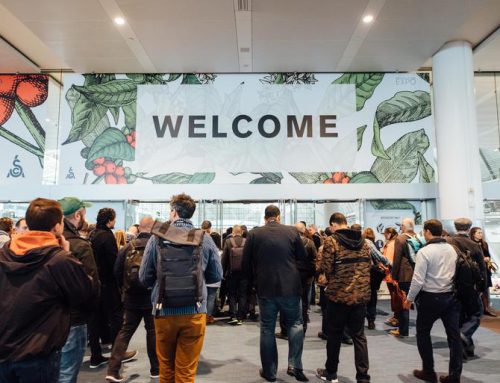Coffee is part of a complex family tree. Thanks to agricultural intervention, producers and researchers have added even more branches to a never-ending genealogy of coffee varieties and coffee cultivars.
Biologically speaking, it all starts with the Rubiaceae shrub family, from which we get the Coffea genus. The most common coffee species that people drink every day are Coffea arabica and Coffea canephora (also known as Arabica and Robusta respectively), but from there, the family tree starts branching off into hundreds of varieties.
Coffee roasters will often include farm and coffee lot information on their packaging, with one of the details being either coffee variety or coffee cultivar. The difference between these two identifiers, which both mean the variety of the coffee plant, is that varieties are naturally occurring while cultivars (cultivated variety) are propagated by people. Much of the innovation around developing new coffee cultivars is based on pest or disease resistance.
Coffee varieties play a big part in the flavors and characteristics of the beans they produce. These differences include bean shape, hardness levels, and the potential to thrive in high altitudes or cold climates. While some coffee lots feature a single variety, a large proportion of farms grow different varietals on their land.
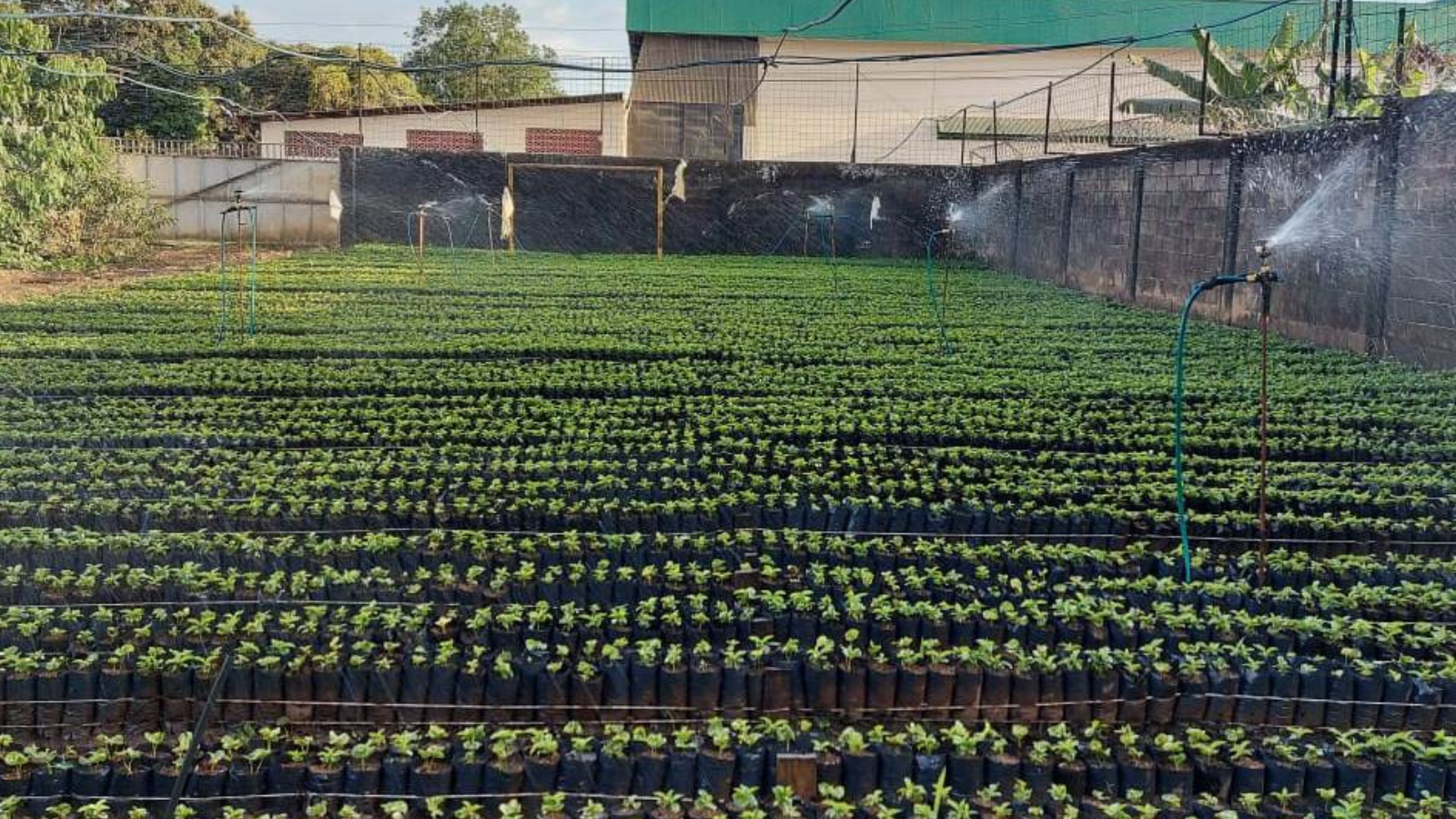
Obata coffee variety nursery at El General Mill
How many varieties of coffee are there?
Wild, indigenous varieties are called landraces. In Ethiopia’s case, there might be thousands of landrace varieties growing in the regional forests. That’s why the blanket term “heirloom” is traditionally used to classify a batch of beans from Ethiopia grown from numerous local varieties. However, the heirloom term has become increasingly problematic and too generic – now producers and coffee buyers are putting more effort into identifying specific coffee varieties in a bid to promote traceability and consistency when sourcing green coffee beans.
In addition to landraces, there are also selections, mutations, and hybrids that develop naturally or in lab settings. Because coffee plants can self-pollinate and produce clones of themselves in seeds, the addition of mutated or cross-pollinated hybrid strains can help boost the diversity and development of stronger, more disease-resistant plants.
Here is a list of some common coffee varieties and coffee cultivars that coffee roasters are likely to come across when looking for specialty green coffee beans.
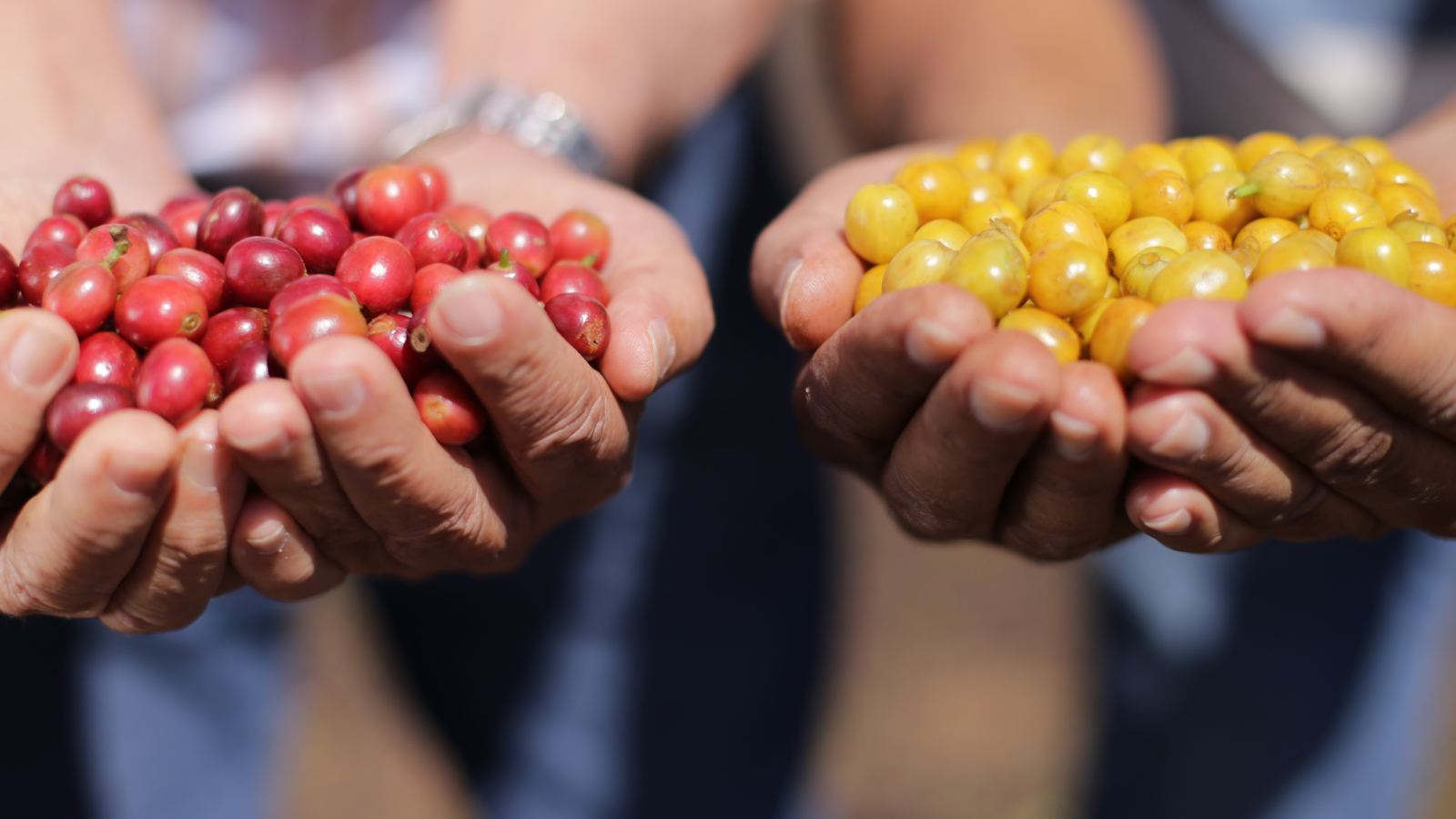
Brazilian coffee farmers holding red & yellow bourbon coffee varieties
Traditional Coffee Varieties |Typica and Bourbon
Typica and Bourbon seeds were the first to be taken from Ethiopia for cultivation in Yemen. Their descendants were distributed around the world and thus became the foundation on which many modern Arabica coffee varieties are based.
Although Typica originated in Ethiopia and evolved in Yemen, the distinct Typica variety we recognize today was cultivated in India in the late 1600s. From there, the seeds spread along colonial trade routes throughout Asia and South and Central America.
On the other hand, Bourbon found its way from Yemen to Bourbon Island (now La Réunion) off the coast of Madagascar via the movement of French missionaries. It wasn’t until the mid-1800s that the variety began spreading to Brazil and the rest of Latin America.
Although these varieties are at risk for leaf rust and disease, they are known for their high quality at high altitudes. Tree productivity is medium to low, and many countries have since replaced Typica and Bourbon plants with other varieties that descend from these strains.
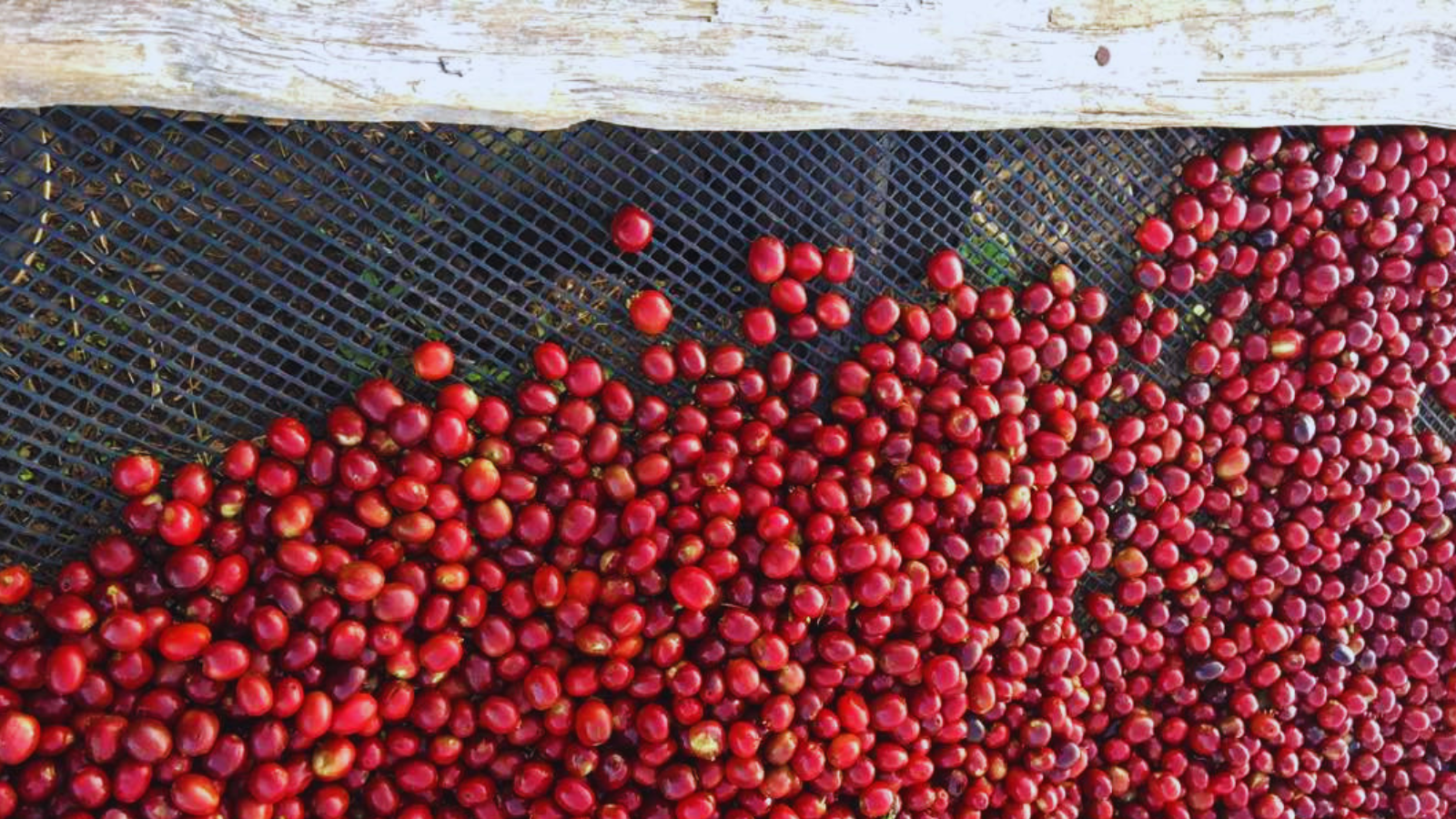
Gesha (Geisha) coffee variety laid out on raised beds
Selections
Gesha – In 2004, the Peterson family launched the Gesha variety into prominence in the “Best of Panama” auction. At that time, however, the coffee was marketed as Panamanian Geisha, leading to some confusion about the naming and origin of this exceptional variety. The reason: when it was imported, the coffee was listed on the manifest as “Geisha” and the name stuck.
Gesha coffee was collected from the Gesha region in Ethiopia and brought to Central America in 1953 as T2722, the variety we know as Panamanian Geisha today. At the same time, while other Gesha varieties share similarities with the original Ethiopian strain, they remain distinct from T2722.
The excellent cup character and delicate floral and fruity notes place Gesha coffee at the top of the list, rarely matched by other varieties in quality.
Java – Java was selected from the Ethiopian landrace Abysinia and introduced to the island of Java by Dutch traders in the 19th century. The variety is an ideal choice for smallholder farmers due to its increased resistance to leaf rust and coffee berry disease (CBD) as well as its potential for great quality at high altitudes.
SL14, SL28, SL34 – These three high-yielding varieties from Kenya were selected at the former Scott Agricultural Laboratories (now the National Agricultural Laboratories) and prefixed “SL” as a mark of the lab. SL28, one of the most well-known African varieties, was selected from a tree in Tanzania that showed resistance to drought, pests, and diseases. Extensive breeding has established the SL28 variety as a highly robust plant.
SL14 – was similarly selected from a tree in Kenya for its drought resistance but yields a lower cup quality than SL28. On the other hand, SL34 shares a similar high cup quality to SL28 but is highly susceptible to CBD.
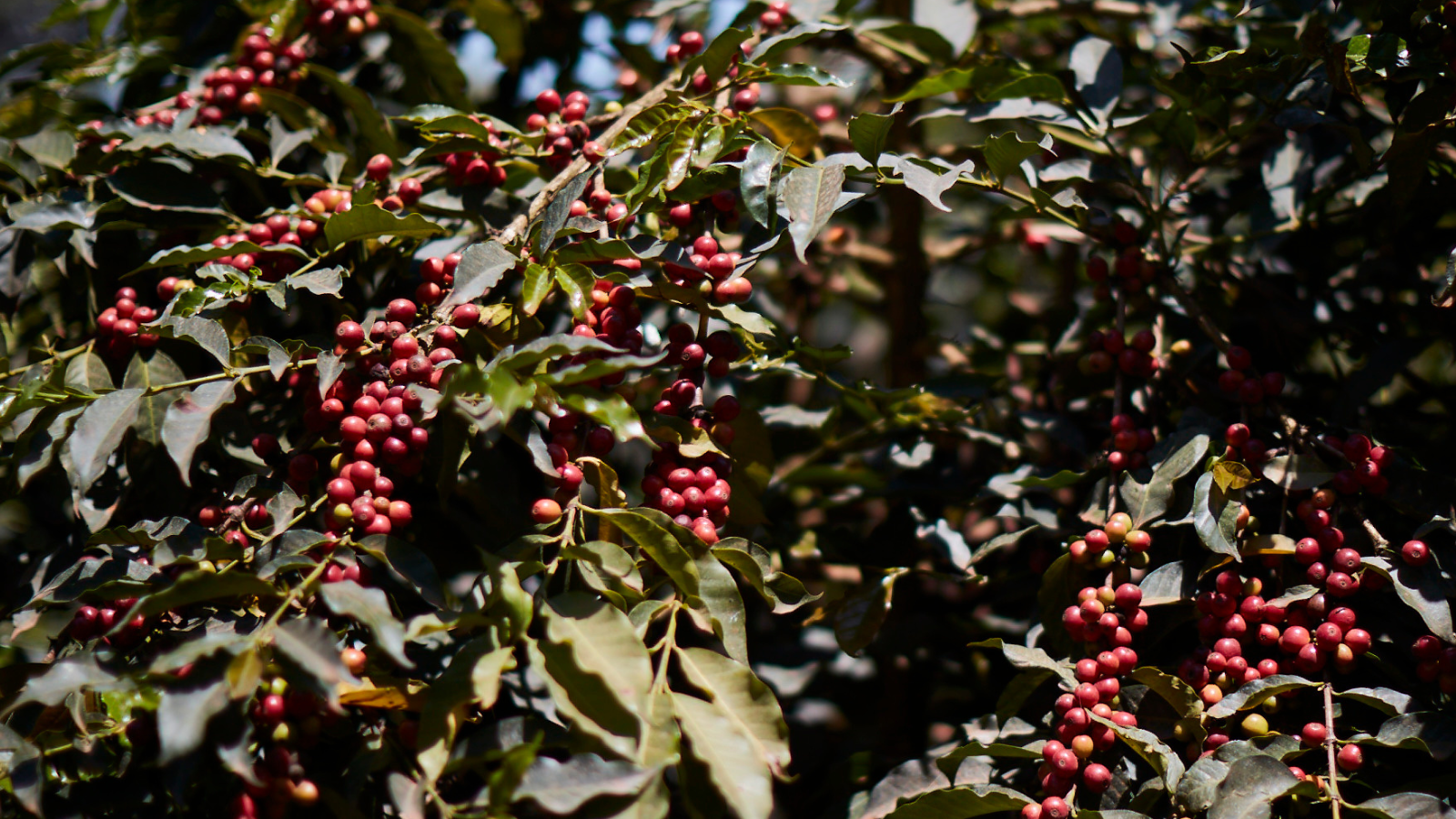
SL 34 coffee variety coffee cherries on Kenyan farm
Mutations | Caturra, Pache, Pacas, Villa Sarchi
This selection of little dwarf trees is mutated from the Bourbon variety, and their short stature and small size make it easier for farmers to pick cherries and plant more densely. Caturra was bred in Brazil before spreading throughout Central America and shares a similar genetic makeup as Pache (Guatemala), Pacas (El Salvador), and Villa Sarchi (Costa Rica) varieties.
Laurina– also a Bourbon mutation, is exceptionally low in caffeine content for an Arabica variety. It results in a delicate, comfortable coffee with low bitterness – a great alternative to decaf coffee – but its low caffeine levels also mean the Laurina plants are more prone to pests. That’s what makes this variety so rare and difficult to grow.
Maragogipe – Maragogipe is notable for its large seeds and its role as one of the parents of Pacamara, which is now a better option for farmers than Maragogipe due to its low productivity. The variety is a natural Typica mutation that was discovered in Brazil in the 1800s.
Hybrid Coffee Varieties
Timor – Many disease-resistant cultivars stem from the Timor hybrid, an unusual fusion between arabica and Robusta plants on the island of Timor in the Pacific Ocean when a leaf rust epidemic wiped out arabica farms. Some of the most common resulting cultivars are Catimor and Sarchimor.
Catimor and Sarchimor – Catimor is a hybrid with Caturra and Timor as parents, created in Portugal and cultivated further in Brazil. Catimor is a group of cultivars instead of a single variety due to the numerous strains that were created with different plant parents. Similarly, Sarchimor is a hybrid offspring of Villa Sarchi and Timor parents.
Mundo Novo – In Brazil, Bourbon naturally cross-pollinated with Typica plants, creating the Mundo Novo hybrid. The variety is known to be very tall and well adapted to growing conditions in Brazil.
Catuaí – The tall Mundo Novo was crossed with the dwarfish Caturra, resulting in a small, highly productive variety called Catuaí. Some strains produce yellow cherries, more commonly found in Costa Rica, and Catuaí remains a large percentage of Guatemala’s coffee trees.
Colombia and Castillo – In the late 1960s, Colombia’s coffee research center, Cenicafé, began working on leaf rust-resistant varieties by crossing Caturra and Timor. The result was the Colombia variety, but they didn’t stop there.
For the next 20 years, the center continued to improve the variety even further and developed Castillo, now the most popular coffee plant in Colombia today due to its high resistance to leaf rust. The Castillo variety includes five plant generations with unique genetic compositions. This allows for a single-variety field to have enough diversity to withstand disease, losing only part of the trees instead of the entire plantation.
Pacamara – Pacamara was developed in El Salvador with Pacas and Maragogipe parents. The variety produces excellent cup quality, uniting the robustness of Pacas plants with the remarkable characteristics of Maragogipe.
Find out more about coffee varieties and their characteristics with the World Coffee Research’s Variety Catalog. The resource was developed to help farmers decide which coffee varieties are best suited for their needs. Planting new trees is a long-term investment that can span generations, so having access to transparent information can be crucial to the success of a coffee farm.
Genuine Origin is always on the lookout for new and exciting coffee innovations from our sourcing partners around the world. Shop online for green coffee, stay tuned on our blog, or follow us on Instagram, Facebook, and Twitter for the latest updates on what we’re cupping every week!




